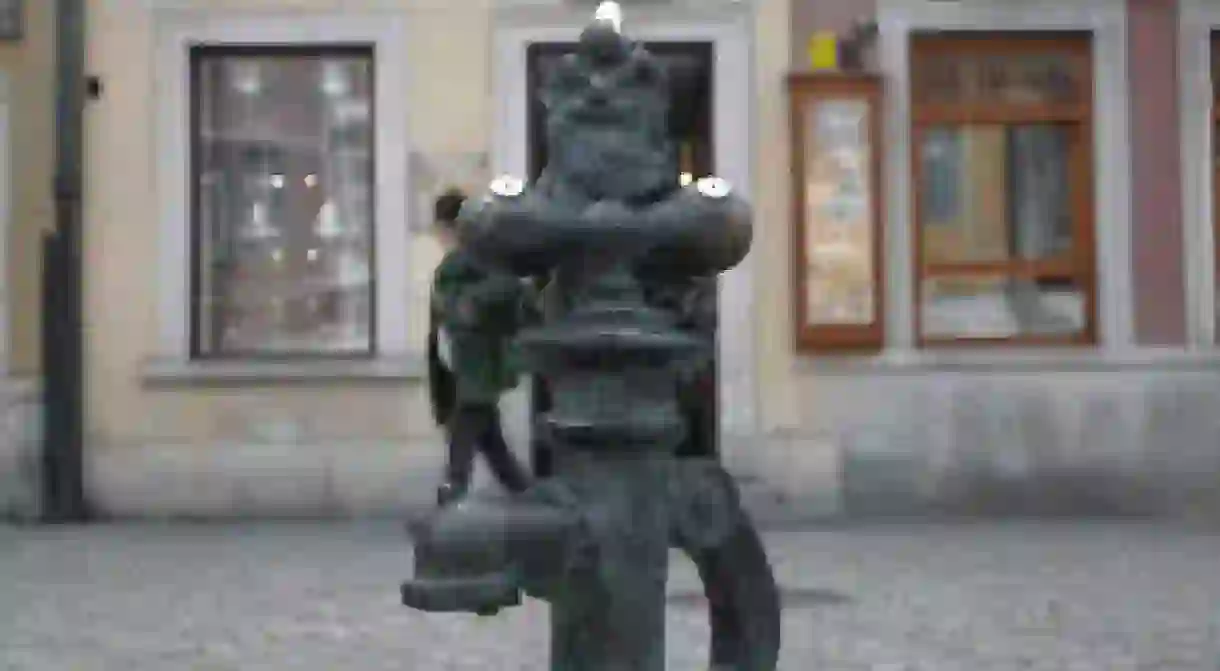A Look Inside the City of the Hundred Dwarves

More than 300 dwarves in various guises and poses inhabit the streets of Wrocław, but they are not just a cute tourist gimmick. With roots in surrealism, the dwarves started off as an artistic anti-communist statement and continue to be a commentary on the city’s life today.
Orange Alternative Movement
The 80s in Poland were characterised by omnipresent censorship, abuse of human rights and empty supermarket shelves. To oppose the oppressive communist regime and give people hope, the Orange Alternative movement grabbed cans of spray paint and drew dwarves where anti-communist graffiti had been white-washed. The first drawings appeared in late August 1982, the brainchild of Waldemar Frydrych, nicknamed The Major, as an effort to fight the absurdity and mendacity of the political system.
The movement’s message is best distilled by Frydrych’s words: “For people in the West, the information about me being detained for handing women sanitary pads would be more telling about the situation in Poland, than if I was detained for reading books and articles written by other oppositionists.” The activities of the group, which included members dressing up as dwarves complete with orange pointy hats, were intended to communicate that the oppressive system was itself surreal.
The movement resonated not only with people in Poland, but also abroad. In the late 80s, The New York Times wrote: “Solzhenitsyn destroyed Communism morally, Kołakowski philosophically and the Orange Alternative aesthetically.” While Surrealism – 50 Works of Art You Should Know listed Frydrych alongside Picasso, Duchamp and Dali.
Dwarf Hunting
At the beginning of the 21st century, the dwarves started to infiltrate the daily life of Wroclaw’s inhabitants and took to the streets in the form of figurines. The first statue of ‘Papa Dwarf’ was placed on Świdnicka Street to commemorate the movement and the location where the group had organised its activities.
In 2005, Tomasz Moczka, an alumni of The Academy of Art and Design in Wrocław designed another five dwarves and placed them around the city. Since then the little creatures have made themselves at home on the streets of Wrocław and their number is constantly rising, currently totalling more than 300. Even though the political context has changed, many of the figurines still reflect issues relevant to the city’s inhabitants. For example, NGO Wrocław Without Barriers unveiled a blind and a deaf-mute dwarf to raise awareness about the differently-abled community.
Equipped with special maps available through visitor centres and a mobile app, tourists can wander around the city trying to spot as many dwarves as possible. Dwarf hunting is a great way to spend time and learn about the city’s turbulent history, but that’s not all that Wrocław has to offer.













